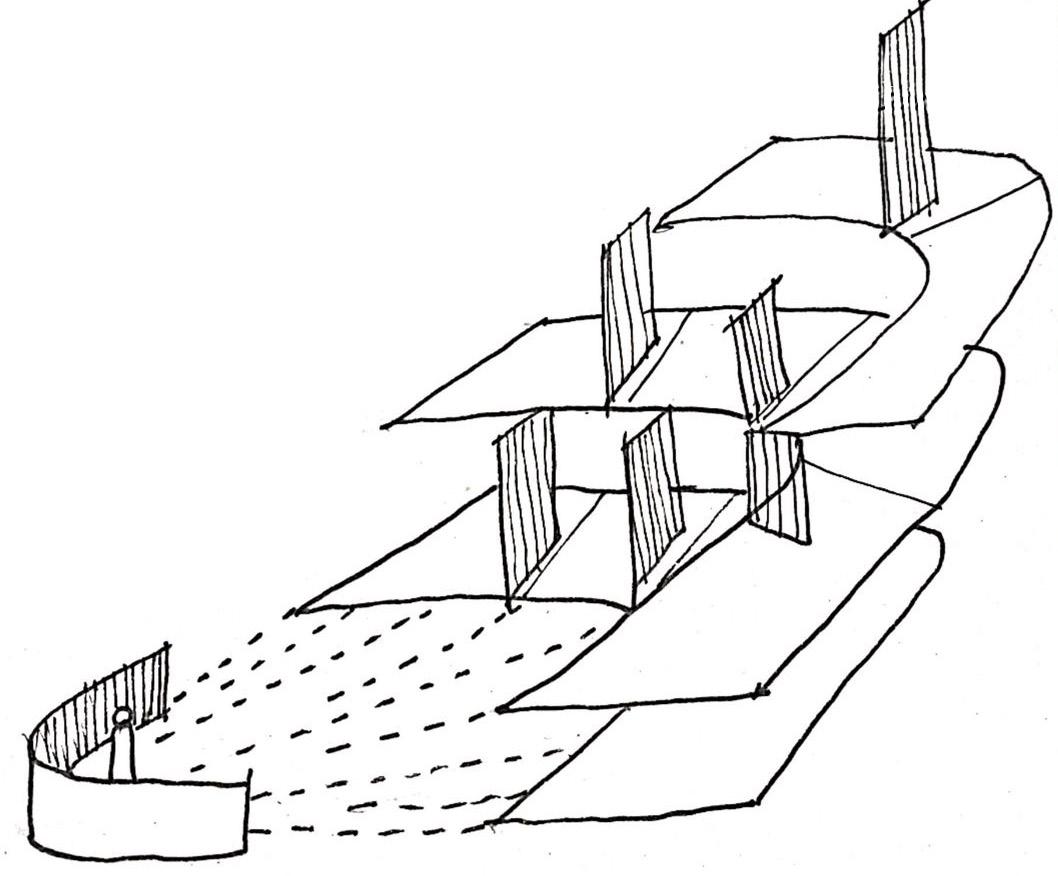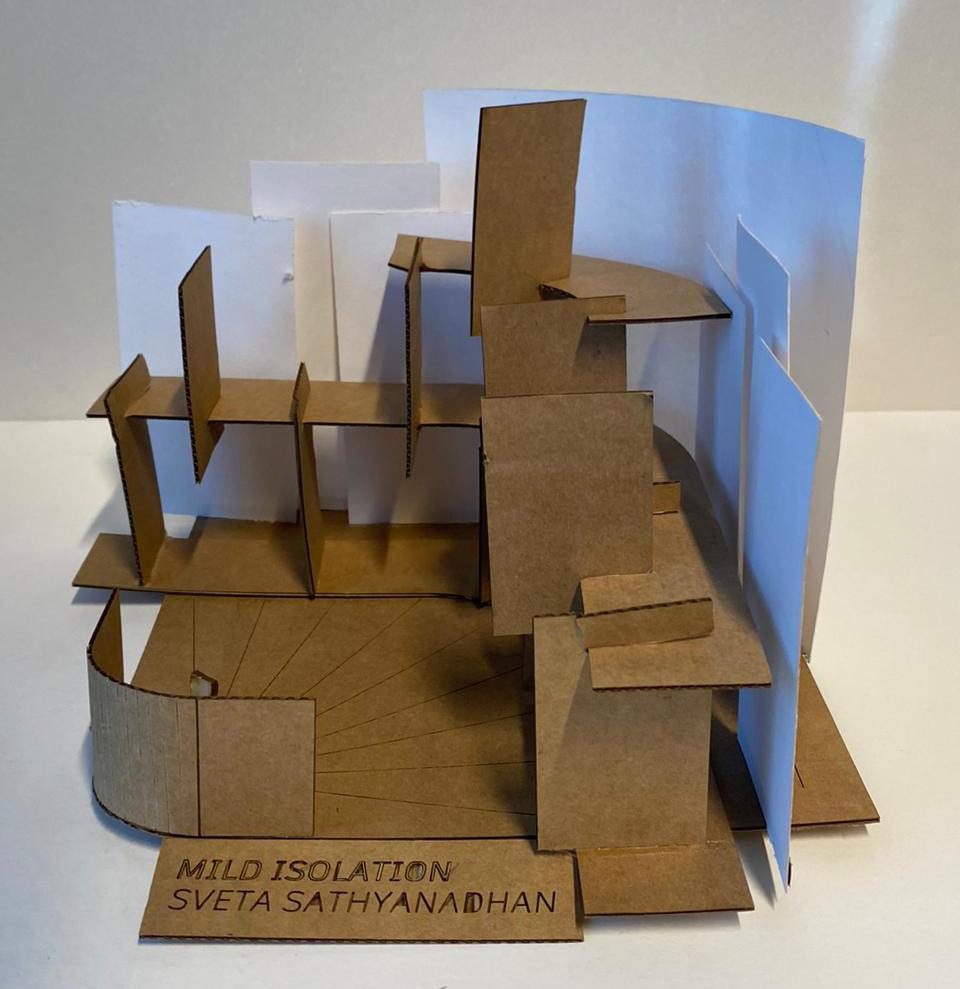
2 minute read
VISUALISING ISOLATION THROUGH SPACE
EXTERNAL PARTITIONS, ENCLOSURE
Partitions
Advertisement
INVIGILATOR’S TABLES STUDENTS
Visual isolation from all students.

Functional Planning
Opposite seats have visibilty although they are spatially segregated.

Walls protecting halls from external disturbances.
Planar archement
To isolated in an external world - In a controlled
Sectional Study
Levels
The disruption of planes through enclosures, levels and partitions help segregate this space and further maintain isolation.
Development
- LEVELS - ENCLOSURE - PARTITIONS
The use of levels here allows mild separation of users, providing them with spatial interaction and visual isolation.
Partition walls are also used as screens to separate users.
Radial arrangement, with centre at the invigilator’s desk - visual connectivity.

Partition walls allow visual isolation of each individual pod while being very closeby spatially.


Examine
To
Isolate
In an examination hall, it is required to create a controlled internal condition to allow the users of space to be examined efficiently. Internally, only minor isolation is required.
The mere addition of a level difference here, helps to spatially isolate the individual psychatric wards, while still maintaining a visual link.
The altered plane that it sits on helps create an invisible boundary.




In a prison cell, the prisoners are allowed to have a certain level of interaction.
The minor change of level here allows each prisoner to still remain isolated within his space, while they are still in visual contact.
The difference in levels allow isolation of each unit space within a smaller area.

Simply considering the vertical axis adds to another way of isolating space.

Here, partition walls are used for a relatively milder isolation to spearate milder patients from each other in shared wards.
Although the wards are still spatially closeby, the partitions block visual connectivity to isolate.
Segmented openings in prisons are used as a punishment to remind the prisoner of being punished, by providing visual connectivity whole being unable to leave the cell.


Partitions or screens in exam hall settings block visual connections while being spatially nearby.
For more high level patients that need to be isolated to a greater extent, elements of enclosure help cut them off both spatially and visually.
The enclosure thickens at points of overlap between two or more wards.
See-through enclosures are introduced as a form of punishment that visually allows the inmates to interact with the outside world, while being physically isolated.
In an exam hall environment, the external world must be completely blocked off from the inside. The partitions here help filter out external disturbances.

Multiple Treaties and Programmes
- NPT : Non-Proliferation of Nuclear Weapons
- CTBT : Comprehensive Nuclear Test Ban Treaty

- TC : Technical Cooperation - to promote sustainable socio-economic development through nuclear science
6 THEMATIC AREAS
Human Health
Agricultural Productivity and Food Security
Water Resource Management
Environmental Protection


Physical and Chemical Applications
Sustainable Energy Development
Safety and Security as a cross cutting theme

SERVICES
TCP - Technical Cooperation Prohramme


CRP - Coordinated Research Projects
Legal - Legislative Assistance
Key Programmes
Review missions and advisory services
Laboratory Services
Networks - online platforms
Education and Training










